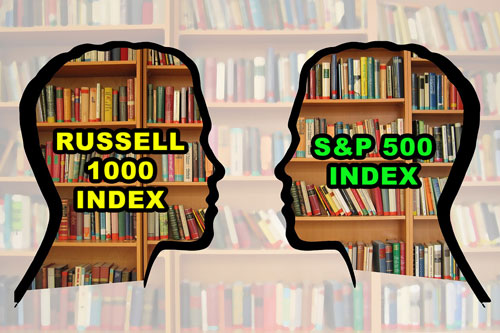When it comes to investing in the stock market, there are a variety of options available. One popular choice for investors is index funds, which are designed to track the performance of a specific market index. Two of the most well-known and widely used indexes are the Russell 1000 and the S&P 500. In this article, we will compare these two indexes and discuss their similarities, differences, and potential benefits for investors.
What Are Index Funds?
Before we dive into the specifics of the Russell 1000 and S&P 500, let’s first define what index funds are. An index fund is a type of mutual fund or exchange-traded fund (ETF) that is designed to track the performance of a specific market index. This means that the fund’s portfolio is made up of the same stocks or securities that make up the index it is tracking.
Index funds are popular among investors because they offer a low-cost and low-risk way to invest in the stock market. They also provide diversification, as they typically hold a large number of stocks from different industries, reducing the impact of any one company’s performance on the overall fund.
What Is the Russell 1000?
The Russell 1000 is a market index that tracks the performance of the 1,000 largest publicly traded companies in the United States. These companies are selected based on their market capitalization, which is the total value of all outstanding shares of a company’s stock.
The Russell 1000 is considered a large-cap index, meaning it primarily includes large, established companies with a market capitalization of $10 billion or more. Some well-known companies in the Russell 1000 include Apple, Microsoft, and Amazon.
Russell 1000 Performance
Over the past 10 years, the Russell 1000 has had an average annual return of 13.6%. However, it is important to note that past performance does not guarantee future results.
The Russell 1000 is often used as a benchmark for large-cap stock performance, as it represents a significant portion of the total U.S. stock market. Many investors use index funds that track the Russell 1000 as a way to gain exposure to the overall stock market and potentially earn a return similar to the index’s performance.
What Is the S&P 500?
The S&P 500, also known as the Standard & Poor’s 500, is another market index that tracks the performance of 500 large-cap companies in the United States. These companies are selected based on their market capitalization, but unlike the Russell 1000, the S&P 500 also considers other factors such as liquidity and industry representation.
The S&P 500 is often considered a more diverse index than the Russell 1000, as it includes companies from a wider range of industries. Some well-known companies in the S&P 500 include Facebook, Johnson & Johnson, and Visa.
S&P 500 Performance
Over the past 10 years, the S&P 500 has had an average annual return of 14.6%. Again, past performance does not guarantee future results.
The S&P 500 is widely regarded as one of the best indicators of the overall health of the U.S. stock market. Many investors use index funds that track the S&P 500 as a way to gain exposure to the stock market and potentially earn a return similar to the index’s performance.
Similarities Between the Russell 1000 and S&P 500
Both the Russell 1000 and S&P 500 are market indexes that track the performance of large-cap companies in the United States. They are both widely used as benchmarks for the overall stock market and are often used as a way for investors to gain exposure to the stock market through index funds.
Additionally, both indexes have had similar performance over the past 10 years, with the S&P 500 slightly outperforming the Russell 1000. This is likely due to the S&P 500’s inclusion of a wider range of industries, providing more diversification.

Differences Between the Russell 1000 and S&P 500
While the Russell 1000 and S&P 500 have many similarities, there are also some key differences between the two indexes.
Number of Companies
As mentioned earlier, the Russell 1000 tracks the performance of 1,000 companies, while the S&P 500 tracks the performance of 500 companies. This means that the Russell 1000 is a larger index and includes more companies, providing slightly more diversification.
Selection Criteria
The Russell 1000 and S&P 500 use different criteria for selecting the companies that make up their indexes. The Russell 1000 primarily considers market capitalization, while the S&P 500 also takes into account other factors such as liquidity and industry representation.
Performance
While the two indexes have had similar performance over the past 10 years, there have been periods where one has outperformed the other. For example, in 2019, the S&P 500 had a return of 31.5%, while the Russell 1000 had a return of 28.6%.
Which Is Better for Investors?
The answer to this question ultimately depends on an investor’s individual goals and risk tolerance. Both the Russell 1000 and S&P 500 offer a low-cost and low-risk way to invest in the stock market, and both have had similar performance over the past 10 years.
However, the S&P 500 may be a better option for investors looking for more diversification, as it includes companies from a wider range of industries. On the other hand, the Russell 1000 may be a better option for investors looking for exposure to larger, more established companies.
Conclusion
In summary, the Russell 1000 and S&P 500 are two popular market indexes that track the performance of large-cap companies in the United States. While they have many similarities, there are also some key differences between the two indexes. Both offer a low-cost and low-risk way to invest in the stock market, and both have had similar performance over the past 10 years. Ultimately, the best option for investors will depend on their individual goals and risk tolerance.




























